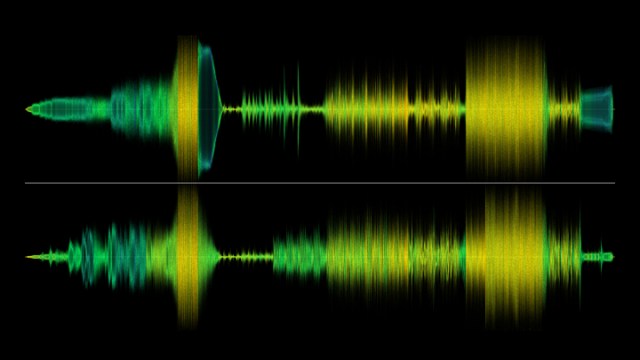Ask Ethan: Could the Universe be infinite?
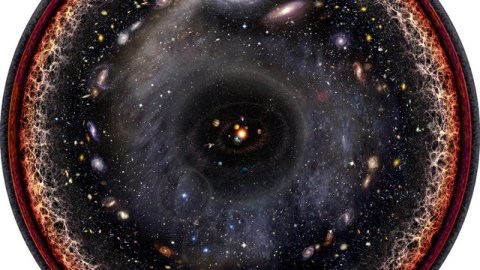
Perhaps the limits of what we can observe aren’t just artificial; perhaps there are no limits to what’s out there at all.
“Two things are infinite, the universe and human stupidity, and I am not yet completely sure about the universe.” –Frederick S. Perls, quoting Einstein
13.8 billion years ago, the Universe began with the hot Big Bang. It’s been expanding and cooling ever since, up through and including the present day. From our point-of-view, we can observe it for some 46 billion light years in all directions, thanks to the speed of light and the expansion of space. Although it’s a huge distance, it’s finite. But that’s just the part we can see. What lies beyond that, and is that possibly infinite? Adam Stephens wants to know:
[W]hat are your thoughts on the universe being infinite or even existence being so? I’ve been told by many cosmologists that an infinite universe or existence hasn’t been materially proven. How can such be empirically proven anyway?
First off, what we see tells us more than those 46 billion light years directly reveals to us.
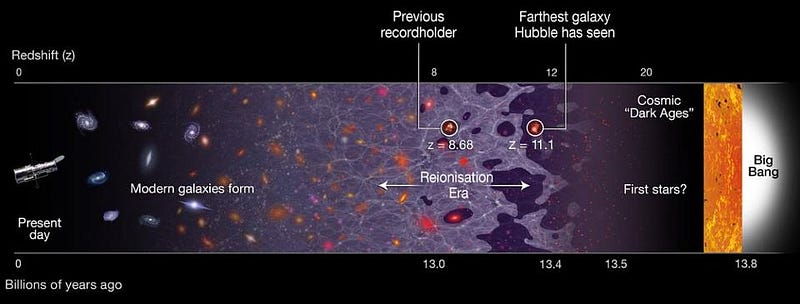
The farther away we look in any direction, the farther back in time we see. The nearest galaxy, some 2.5 million light years away, appears to us as it was 2.5 million years ago, because the light requires that much time to journey to our eyes from when it was emitted. More distant galaxies appear as they were tens of millions, hundreds of millions or even billions of years ago. As we look ever farther away in space, we see light from the Universe as it was when it was younger. So if we look for light that was emitted 13.8 billion years ago, as a relic of the hot Big Bang, we can actually find it: the cosmic microwave background.
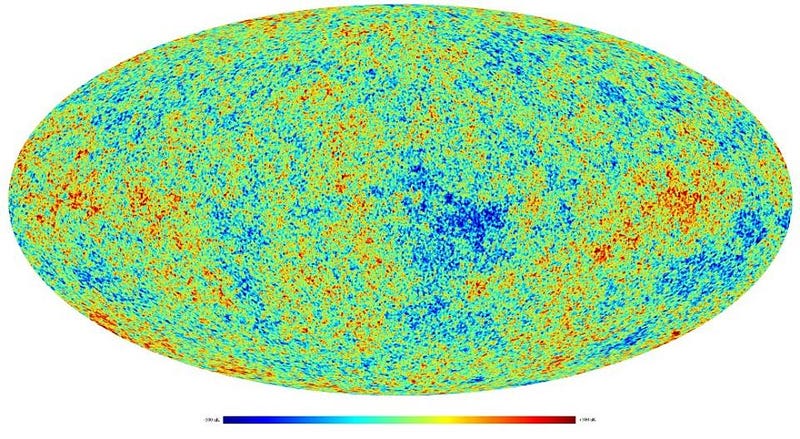
This pattern of fluctuations is incredibly intricate, with different average temperature differences on different angular scales. It also encodes an incredible amount of information about the Universe, including a startling fact: the curvature of space, as best as we can tell, is completely flat. If space were positively curved, like we lived on the surface of a 4D sphere, we would see these distant light rays converge. If it were negatively curved, like we lived on the surface of a 4D saddle, we would see those distant light rays diverge. Instead, distant light rays move in their original direction, and the fluctuations we have indicate perfect flatness.
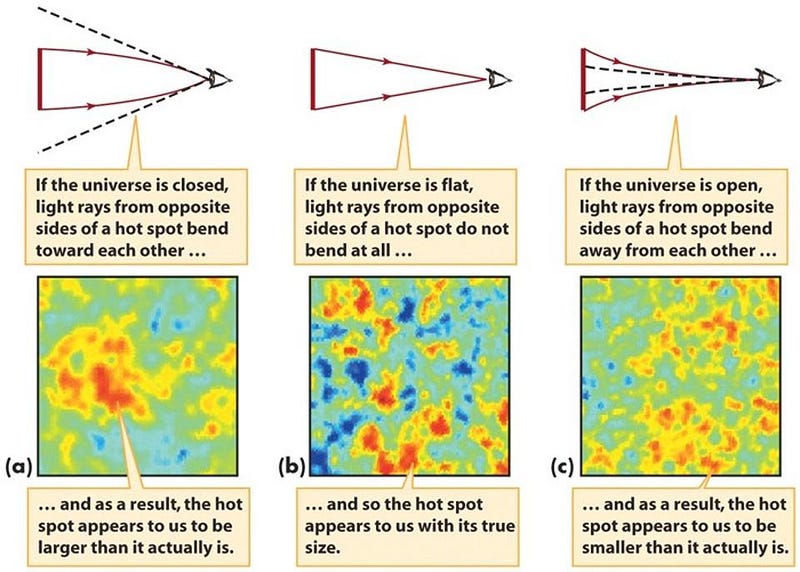
From the cosmic microwave background and the large-scale structure of the Universe (via baryon acoustic oscillations) combined, we can conclude that if the Universe is finite and loops back in on itself, it must be at least 250 times the size of the part we observe. Because we live in three dimensions, 250 times the radius means (250)3 times the volume, or more than 15 million times as much space. But, big as that is, it still isn’t infinite. A lower bound of the Universe being at least 11 trillion light years in all directions is tremendous, but it’s still finite.
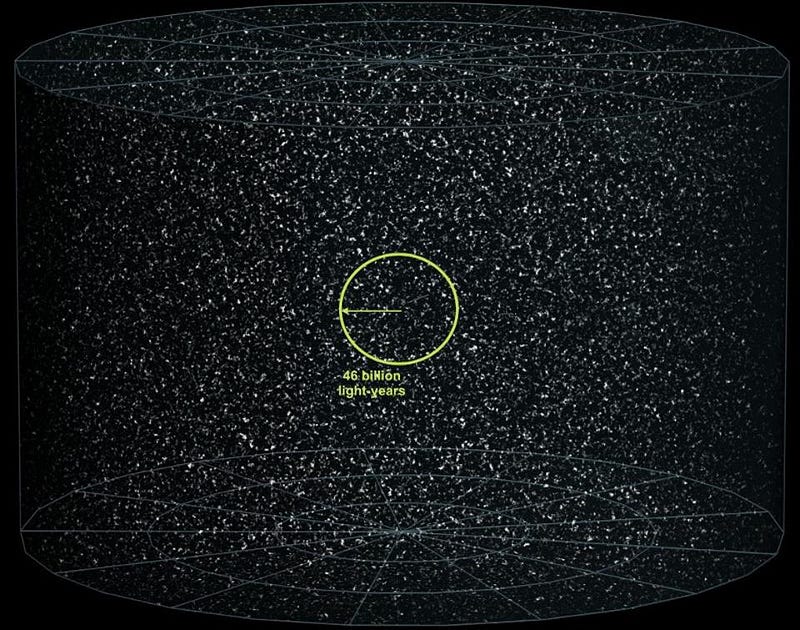
There’s reason to believe it’s even bigger, though. The hot Big Bang might mark the beginning of the observable Universe as we know it, but it doesn’t mark the birth of space and time itself. Before the Big Bang, the Universe underwent a period of cosmic inflation. Instead of being filled with matter and radiation, and instead of being hot, the Universe was:
- filled with energy inherent to space itself,
- expanding at a constant, exponential rate,
- and creating new space so quickly that the smallest physical length scale, the Planck length, would be stretched to the size of the presently observable Universe every 10–32 seconds.

It’s true that in our region of the Universe, inflation came to an end. But there are a few questions we don’t know the answer to that have a tremendous influence on how big the Universe truly is, and whether it’s infinite or not.
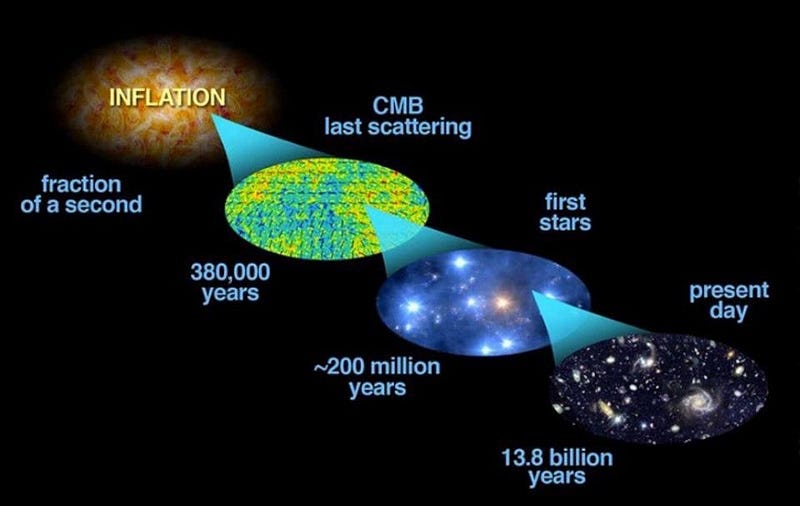
1.) How big was the region of the Universe, post-inflation, that created our hot Big Bang? Looking at our Universe today, at how uniform the Big Bang’s leftover glow is, at how flat the Universe is, at the fluctuations stretched across the Universe on all scales, etc., there’s quite a bit we can learn. We can learn the upper limit to the energy scale at which inflation occurred; we can learn how much the Universe must have inflated; we can learn a lower limit how long inflation must have gone on for. But the pocket of the inflating Universe that gave rise to us could be much, much bigger than that lower limit! It could be hundreds, or millions, or googols of times larger than what we can observe… or even truly infinite. But without being able to observe more of the Universe than we can presently access, we don’t have enough information to decide.
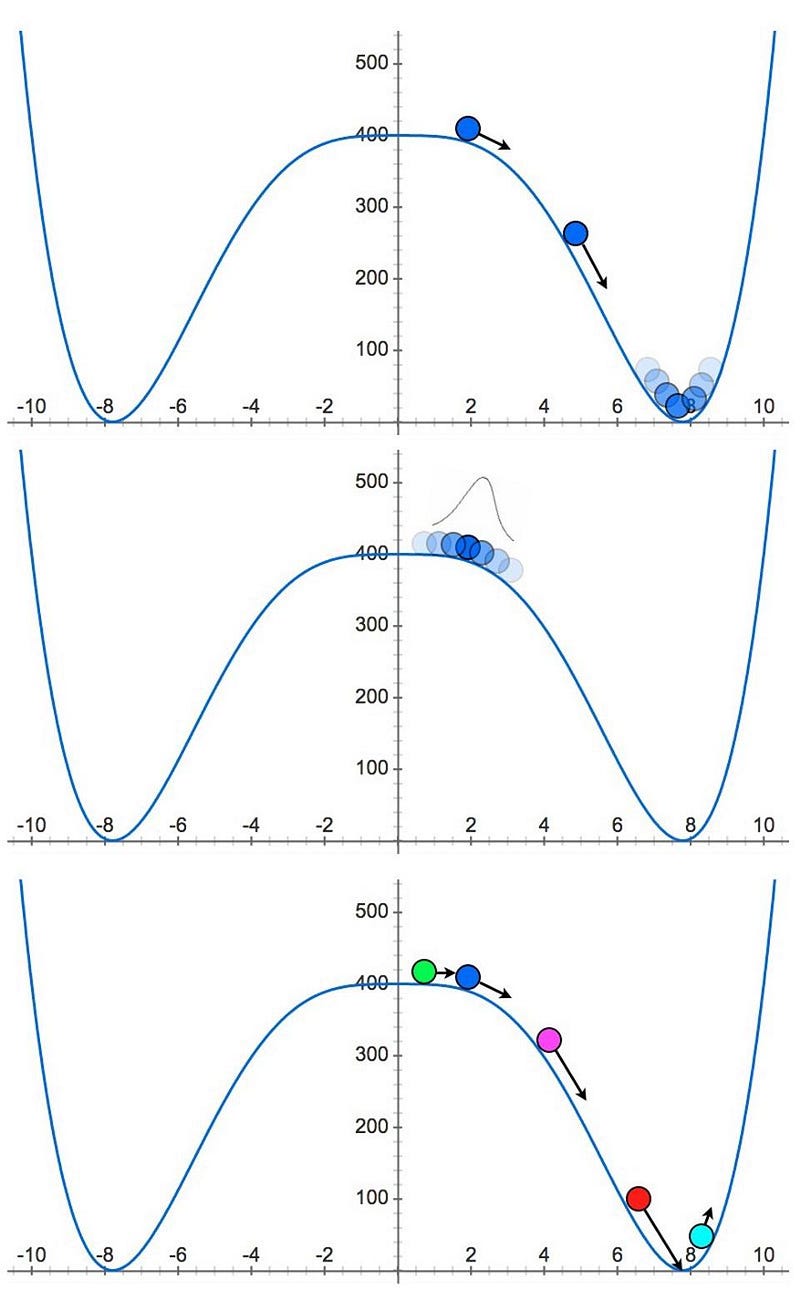
2.) Is the idea of “eternal inflation” correct? If you consider that inflation must be a quantum field, then at any given point during that phase of exponential expansion, there’s a probability that inflation will end, resulting in a Big Bang, and a probability that inflation will continue, creating more and more space. These are calculations we know how to do (given certain assumptions), and they lead to an inevitable conclusion: if you want enough inflation to occur to produce the Universe we see, then inflation will always create more space that continues to inflate compared to the regions that end and produce Big Bangs. While our observable Universe may have come about from inflation ending in our region of space some 13.8 billion years ago, there are regions where inflation continues — creating more and more space and giving rise to more Big Bangs — continuing to the present day. This idea is known as eternal inflation, and is generally accepted by the theoretical physics community. How big, then, is the entire unobservable Universe by now?
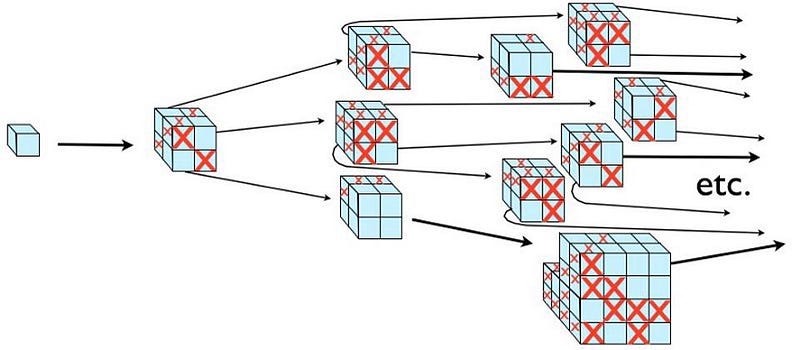
3.) And how long did inflation go on prior to its end and the resultant hot Big Bang? We can only see the observable Universe created by inflation’s end and our hot Big Bang. We know that inflation must have occurred for at least some ~10–32 seconds or so, but it likely went on for longer. But how much longer? For seconds? Years? Billions of years? Or even an arbitrary, infinite amount of time? Has the Universe always been inflating? Did inflation have a beginning? Did it arise from a previous state that was around eternally? Or, perhaps, did all of space and time emerge from nothingness a finite amount of time ago? These are all possibilities, and yet the answer is untestable and elusive at present.

From our best observations, we know that the Universe is an awful lot bigger than the part we can observe. Beyond what we can see, we strongly suspect that there’s plenty more Universe out there just like ours, with the same laws of physics, the same types of structures (stars, galaxies, clusters, filaments, voids, etc.), and the same chances at complex life. There should also be a finite size and scale to the “bubble” in which inflation ended, and an exponentially huge number of such bubbles contained within the larger, inflating spacetime. But as inconceivably large as that entire Universe (or Multiverse, if you prefer) is, it might not be infinite. In fact, unless inflation went on for a truly infinite amount of time, the Universe must be finite in extent.
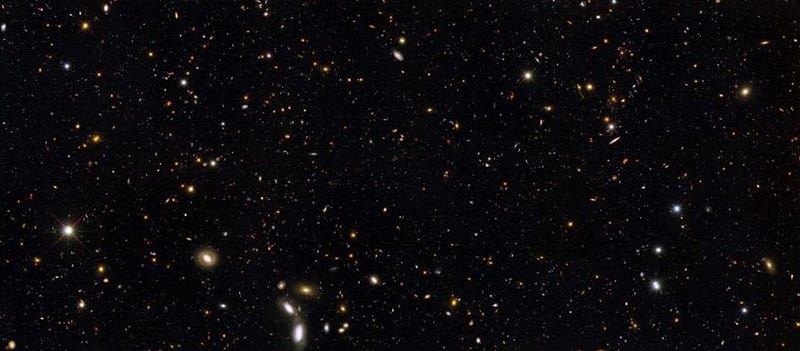
The biggest problem of all, though? It’s that we only know how to access the information available inside our observable Universe: those 46 billion light years in all directions. The answer to the biggest of all questions — whether the Universe is finite or infinite — might be encoded in the Universe itself, but we can’t access enough of it to know. Until we either figure it out, or come up with a clever scheme to expand what we know physics is capable of, all we’ll have are the possibilities.
This post first appeared at Forbes, and is brought to you ad-free by our Patreon supporters. Comment on our forum, & buy our first book: Beyond The Galaxy!





